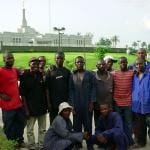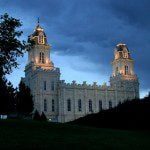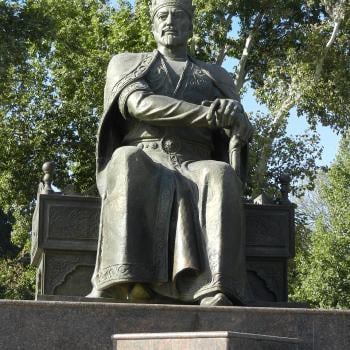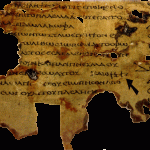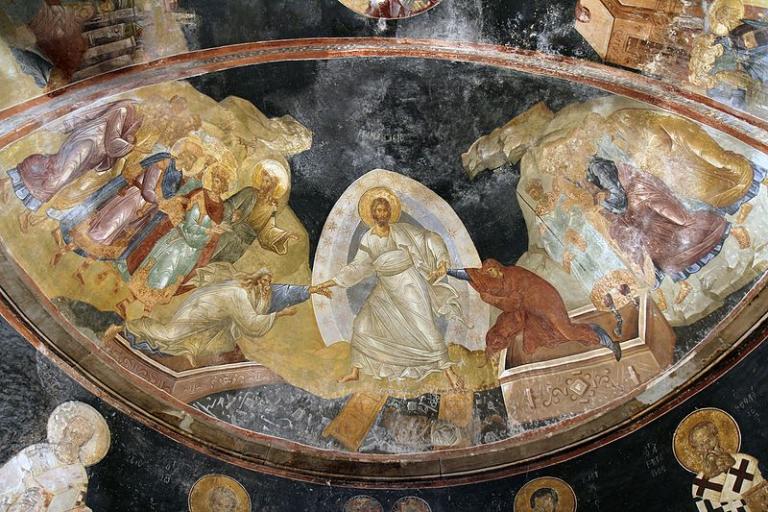
(Wikimedia Commons public domain image)
Just in from a bit of shoveling snow at my father-in-law’s place across the street from the parking lot of the Bountiful Utah Temple. It is a beautiful, clean, clear, sunny day. Spring may actually, finally, be on its way.
A lecture went up fairly late yesterday on the website of the Interpreter Foundation website that I think some of you will find of interest: Conference Talks: “‘I Have Done According to My Will’: Reading Jacob 5 as a Temple Text.” It was delivered by Professor Matthew L. Bowen on Saturday, 25 October 2014, as part of the Interpreter Foundation’s 2014 Temple on Mount Zion Conference.
With Easter on its way, I think it might be appropriate to share something from my ongoing slow-motion reading of Andrew Loke, Investigating the Resurrection of Jesus Christ: A New Transdisciplinary Approach (Routledge, 2020). It’s perhaps, quite unintentionally, one of the funniest counter-explanations of what happened at Easter that I’ve ever come across:
Eisenberg (2016) has combined a variation of the swoon hypothesis and the remain buried hypothesis together with the intramental hypothesis and the mistaken identity hypothesis. The key question asked by Eisenberg is this: What would have happened if those who retrieved Jesus’ body found that he was still alive? Eisenberg suggests the following scenario: Jesus survived the crucifixion and was discovered to be barely alive by the few followers (e.g. Joseph [of Arimathea -dcp]) who retrieved him. Hoping that Jesus would survive, and fearful that the Romans would discover he had illegally rescued a condemned man, Joseph faked the burial of Jesus (by having his slaves go to an available tomb, carrying a corpse-shaped bundle of burial cloth, placed it inside, and then sealed the tomb) while trying to revive Jesus. However, Jesus expired soon after, and was buried quietly in an anonymous grave. Nevertheless, rumour of his survival reached his followers and the Romans, who opened the tomb and discovered the body missing. To sooth their grief the disciples seized on the rumour of Jesus’s survival and encouraged each other to hear the voice and see the image of Jesus in other people, which later become interpreted as a physical resurrection.
Eisenberg thinks . . . that reports of feeling the presence of a post-crucifixion Jesus in another person would have been readily accepted by disciples given the fact that people of the first century commonly believed in possession by demons or spirits, visitations by gods, and the transmigration of souls, and given that Jesus predicted his own resurrection. (144-145)
If you’re determined not to believe that Christ actually rose from the dead and you don’t care about evidence, the sky’s the limit. You can simply make up whatever you like, as Eisenberg apparently did in 2016. Of course, once you feel free to toss the documentary evidence out, I’m not sure why you shouldn’t simply go ahead and dismiss all of it. You can simply say that Jesus is a fictional character and that, accordingly, since neither has any actual basis in reality, the account of his resurrection no more needs to be explained than does Icarus’s ability to fly up close to the Sun. (And that, of course, is exactly what some of the more extreme critics of Christianity do, since they’re quite completely untethered to historical analysis or evidence.)
“Once you eliminate the impossible,” said Sherlock Holmes, explaining his investigative technique to Dr. Watson, “whatever remains, no matter how improbable, must be the truth.” For some critics, resurrection is flatly impossible. And thus, for them, even Eisenberg’s elaborate and imaginative tale is much more likely to be true than what Christians claim.
Several years ago, Interpreter: A Journal of Latter-day Saint Faith and Scholarship began commissioning a special article for publication every year at Christmas time and at Easter — or, more accurately in the latter case, to appear annually on Good Friday. Here are links to the Easter articles that we’ve already published in this series. I hope that you will take time during this current Holy Week to read one or more of them:
“Resurrection Month” (Claudia Bushman)
“Christ and the Work of Suffering” (Melissa Wei-Tsing Inouye)
“The Crucifixion as a Mockery, Witness, and Warning of the Judgment” (George L. Mitton)
“The First Easter” (S. Kent Brown)
“Easters: The Eternal Atoning Sacrifice Testifies of the Everlasting Redeeming Savior” (Alan C. Ashton)
“The Healing and Exalting Powers of Christ Weave Together at Easter” (Ann Madsen)
“Why Did You Choose Me?” (Joseph Grenny)
“Three Streams of Gratitude for Jesus” (Mitt Romney)
A new Easter-related article is slated to appear in Interpreter tomorrow, on Friday, 7 April 2023.
In a striking illustration of the concept of entropy, the snowman in our backyard is showing unmistakable signs of decay and decrepitude. Sadly, his life has been a short one. But it was filled with magical moments, and he will live on in the heart of our granddaughter. Incidentally, too, we again spent part of yesterday out at Thanksgiving Point — this time, in particular, at the Museum of Natural Curiosity. (Many thanks to Alan and Karen Ashton for the gift that they have given to Utah Valley!) Since it was during spring break, on a day when the snow is still several feet high outside, I have to admit that the place was something of a madhouse. Contrary to expectations, we were not the only people there, and our granddaughter was not the only child.
One of the fun things about having this particular son here is that he’s an actual foodie, quite unlike y’r obd’t servant. He watches food shows, loves to cook, can’t go out even for fast food or doughnuts without first consulting multiple online reviews, and the like. He and his wife like Provo’s own Bombay House — they even had us bring some out once on a flight to the east — so, on Tuesday night, we enjoyed Indian food. My wife and I like Indian food, too, but it’s been a while. So I was really pleased to have chicken makhani again, and my own personal favorite, chicken coconut kurma, and to wash them down with drinkable bliss itself: an ice-cold mango lassi.
Posted from Bountiful, Utah


